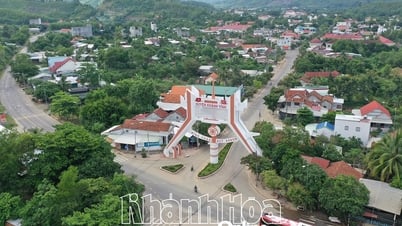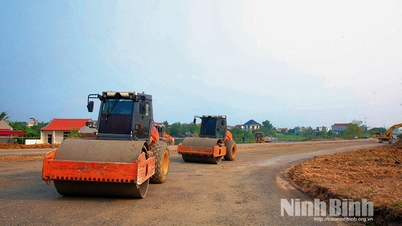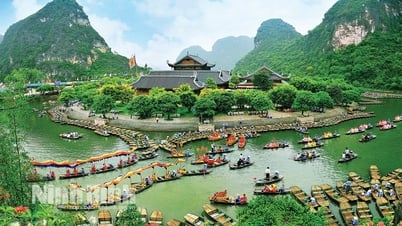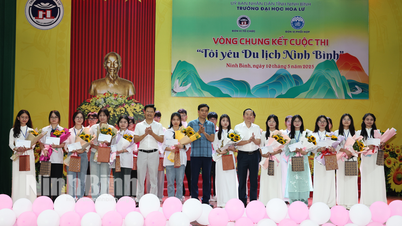
Specifically, in the North (including the capital Hanoi), the highest temperature during the day is from 35 to 36 degrees Celsius, with some places above 38 degrees Celsius.
The Central region has the highest temperature during the day from 36 to 38 degrees Celsius, the highest place can be over 38 degrees Celsius.
The Central Highlands and the South have the highest daily temperatures from 35 to 36 degrees Celsius, with some places above 36 degrees Celsius.
The heat wave in the North is forecast to last until April 23; in the Central region it will last until April 24, and from April 25 the heat wave will gradually decrease; in the Central Highlands and the South: the heat wave may continue for many days.
From the evening of April 23-25 and April 27-28, the North and North Central regions are likely to experience showers and thunderstorms, with some places experiencing heavy rain (rain will be concentrated in the evening and at night, beware of the risk of tornadoes, hail and strong gusts of wind); temperatures will decrease, and the heat wave will temporarily end.
Regarding the weather trend during the April 30 - May 4 holidays and the first days of May, Mr. Nguyen Van Huong said that the North is likely to have showers and thunderstorms. The Central region will have little rain and localized heat. The Central Highlands and the South will have localized heat, with showers and thunderstorms likely in the late afternoon and evening.
"This is the transitional season, extreme weather phenomena such as thunderstorms, tornadoes, lightning, hail, and strong gusts of wind can occur, especially in the evening. At the same time, the heat in the coming days can have adverse effects on people's health, increase the risk of explosions, forest fires, and affect production and daily life. People need to regularly monitor weather forecasts to proactively prevent and ensure safety for production, daily life and tourism activities during the holidays," Mr. Nguyen Van Huong noted.
Hydrometeorological experts recommend that intense heat (over 35 degrees Celsius) can cause heatstroke and heat shock. Showers and thunderstorms can disrupt outdoor events and cause slipping. Therefore, the Organizing Committee of the anniversary should prepare plans to deal with rain, strong winds, heat, etc., such as setting up tents and covering equipment.
People participating in the event should prepare umbrellas, raincoats, drinking water… depending on weather conditions.
Functional units ensure rescue, medical, and fire prevention and fighting vehicles are ready to promptly respond to situations arising due to weather.
Referring to the provision of hydrometeorological information during the holidays, Associate Professor, Doctor, Director of the National Center for Hydro-Meteorological Forecasting Mai Van Khiem emphasized that in order to ensure that weather information is provided promptly, accurately and fully to serve people, tourism activities, travel as well as event organization during the April 30 - May 1 holiday, the Department of Hydro-Meteorology (Ministry of Agriculture and Environment) has directed the National Center for Hydro-Meteorological Forecasting to coordinate with relevant units to develop a detailed plan for weather forecasting and warning during the period from April 15 to May 5, 2025.
From now on, the National Center for Hydro-Meteorological Forecasting will continue to increase the frequency of issuing forecast bulletins, while closely monitoring and providing early warnings of dangerous weather phenomena such as heavy rain, thunderstorms, tornadoes, strong winds at sea, hail, etc. to help people, local authorities and relevant units proactively prevent and minimize damage.
In particular, forecasting work will focus on major event areas across the country, ensuring information is continuously updated, close to reality, effectively serving the organization and ensuring safety for outdoor activities during the holidays.
Source: https://baoninhbinh.org.vn/du-bao-xu-the-thoi-tiet-dip-nghi-le-30-4-1-5-196068.htm


![[Photo] Prime Minister Pham Minh Chinh starts construction of vital highway through Thai Binh and Nam Dinh](https://vphoto.vietnam.vn/thumb/1200x675/vietnam/resource/IMAGE/2025/5/12/52d98584ccea4c8dbf7c7f7484433af5)


![[Photo] Prime Minister Pham Minh Chinh works with the Standing Committee of Thai Binh Provincial Party Committee](https://vphoto.vietnam.vn/thumb/1200x675/vietnam/resource/IMAGE/2025/5/12/f514ab990c544e05a446f77bba59c7d1)
![[Photo] Prime Minister Pham Minh Chinh receives Swedish Minister of International Development Cooperation and Foreign Trade](https://vphoto.vietnam.vn/thumb/1200x675/vietnam/resource/IMAGE/2025/5/12/ae50d0bb57584fd1bbe1cd77d9ad6d97)


















































































Comment (0)